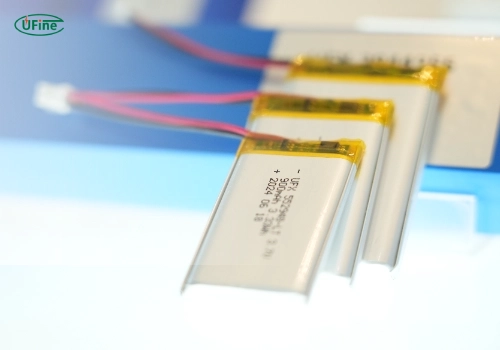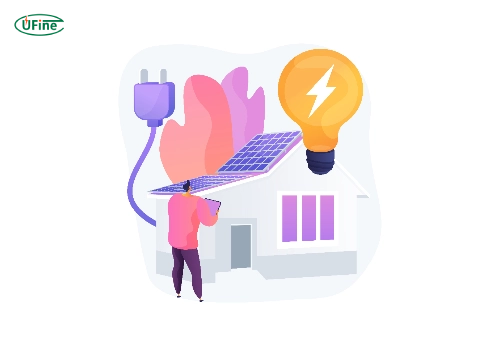Low voltage batteries have become increasingly popular in recent years, finding applications in various fields, from residential energy storage to portable electronics. This comprehensive guide will explore the world of low-voltage batteries, their characteristics, applications, and advantages.
Part 1. What are low-voltage batteries?
Low-voltage batteries are energy storage devices that operate at voltages typically below 100V. They provide power for various applications while maintaining safety and efficiency. Unlike their high-voltage counterparts, low-voltage batteries offer unique advantages in terms of safety, scalability, and ease of use.
Critical characteristics of low voltage batteries:
- Voltage range: Usually below 100V
- Higher current output compared to high voltage batteries
- Smaller individual units for customizable configurations
- Safer to handle and install
- More affordable manufacturing process
Part 2. Types of low voltage batteries
Several types of low-voltage batteries are available in the market, each with its characteristics and applications. Let’s explore some of the most common types:
Lithium-ion (Li-ion) batteries
Li-ion batteries are among the most popular low-voltage options due to their high energy density and long cycle life. They typically operate at a nominal voltage range of 3.6-3.7V per cell.
Nickel-Metal Hydride (NiMH) batteries
NiMH batteries have been used in portable electronic devices for many years. They offer a good balance between energy density and cost-effectiveness.
Lead-Acid batteries
Automotive applications and backup power systems have utilized lead-acid batteries. They are known for providing high current output over short periods.
Alkaline batteries
Alkaline batteries are popular for powering small electronics and household devices. They are affordable and readily available in various sizes.
Part 3. Applications of low-voltage batteries
Low-voltage batteries have applications in numerous fields, from residential energy storage to portable electronics. Here are some key areas where these batteries excel:
Home energy storage systems
Residential solar energy storage systems increasingly use low-voltage batteries. They allow homeowners to store excess energy generated by solar panels for use at night or on cloudy days.
Portable electronics
Many everyday devices, such as smartphones, laptops, and tablets, use low-voltage batteries for power. These batteries provide the perfect balance of energy density and safety for portable applications.
Electric vehicles (EVs)
While high-voltage batteries are more common in EVs, some manufacturers are exploring the use of low-voltage batteries for specific components or hybrid systems.
Medical devices
Low-voltage batteries are crucial in powering various medical devices, including pacemakers, insulin pumps, and hearing aids. Their compact size and reliability make them ideal for these critical applications.
Off-grid power systems
Low-voltage battery systems offer a reliable and scalable energy storage solution for remote locations or areas with limited access to the power grid.
Part 4. Advantages of low voltage batteries
Low-voltage batteries offer several advantages over their high-voltage counterparts, making them an attractive choice for many applications:
Enhanced safety
One of the primary benefits of low-voltage batteries is their improved safety profile. The lower voltage reduces the risk of electrical shock and makes them safer to handle during installation and maintenance.
Easier installation and scalability
Low-voltage battery systems are typically easier to install and can be scaled up or down more quickly. This flexibility allows users to customize their energy storage solutions based on their needs.
Lower manufacturing costs
The manufacturing process for low-voltage batteries is often less complex and costly than that of high-voltage batteries. This can translate to more affordable energy storage solutions for consumers.
Compatibility with a wide range of devices
Many electronic devices and appliances use low-voltage power sources, making low-voltage batteries a versatile choice for various applications.
Part 5. Low voltage battery management systems (BMS)
The battery management system (BMS) is a crucial component of any low-voltage battery system. It plays a vital role in ensuring the battery’s safe and efficient operation.
Essential functions of a low voltage BMS:
- Monitoring individual cell voltages
- Balancing cell charges
- Protecting against overcharging and over-discharging
- Temperature monitoring and control
- Communication with external systems (e.g., inverters)
Part 6. Comparing low-voltage and high-voltage battery systems
While both low-voltage and high-voltage battery systems have their place in the energy storage landscape, it’s essential to understand their differences:
|
Aspect |
Low Voltage Batteries |
High Voltage Batteries |
|
Voltage range |
Typically below 100V |
Usually around 400V or higher |
|
Current |
Higher current |
Lower current |
|
Conductor size |
Larger conductors required |
Smaller conductors sufficient |
|
Safety |
Generally safer to handle |
Requires more safety precautions |
|
Scalability |
It is more straightforward to scale and customize |
Limited scalability |
|
Installation |
Simpler installation process |
More complex installation |
|
Cost |
Often more affordable |
Generally more expensive |
|
Efficiency |
Lower efficiency in some applications |
Higher efficiency, especially in large systems |
High Voltage Battery vs Low Voltage Battery: Which is Better for You?
Part 7. Factors to consider when choosing a low-voltage battery
When selecting a low-voltage battery for your application, you should consider several factors:
- Capacity: Determine the amount of energy storage you need.
- Voltage requirements: Ensure compatibility with your devices or systems.
- Discharge rate: Consider how quickly you must draw power from the battery.
- Cycle life: Look at how many charge-discharge cycles the battery can handle.
- Environmental conditions: Consider temperature ranges and other environmental factors.
- Cost: Evaluate both upfront and long-term costs, including maintenance.
- Safety features: Look for batteries with built-in safety mechanisms.
- Brand reputation: Choose batteries from reputable manufacturers with good customer support.
Part 8. Maintenance and care of low-voltage batteries
Proper maintenance is crucial for ensuring the longevity and performance of low-voltage batteries. Here are some tips for maintaining your low-voltage battery system:
- Regular inspections: Check for any damage, corrosion, or leakage signs.
- Keep batteries clean: Remove any dirt or debris that may accumulate on the battery surface.
- Proper charging: Follow the manufacturer’s guidelines for charging procedures and avoid overcharging.
- Temperature control: Keep batteries within the recommended temperature range for optimal performance.
- Avoid deep discharges: Avoid draining the battery completely, as this can reduce its lifespan.
- Balance charging: For multi-cell batteries, ensure you charge all cells evenly.
- Storage: Following the manufacturer’s recommendations for storing batteries for extended periods.
Part 9. FAQs
-
Are low-voltage batteries safer than high-voltage batteries?
Generally, people consider low-voltage batteries safer to handle and install than high-voltage batteries. The lower voltage reduces the risk of electrical shock, making them a preferred choice for many residential and small-scale applications. -
Can low-voltage batteries be used for home energy storage?
Low-voltage batteries are increasingly popular for home energy storage systems, especially with solar panels. They offer a good balance of safety, scalability, and ease of installation for residential use. -
How long do low-voltage batteries typically last?
The lifespan of a low-voltage battery depends on various factors, including the type of battery, usage patterns, and maintenance. Generally, high-quality lithium-ion low-voltage batteries can last 5 to 15 years or more with proper care. -
Are there any disadvantages to using low-voltage batteries?
While low-voltage batteries offer many advantages, they do have some limitations. They may struggle with high-power, instantaneous loads and require more prominent conductors due to higher current flow. Additionally, in some large-scale applications, they may be less efficient compared to high-voltage systems.
Related Tags:
More Articles

How to Choose the Best Floor Scrubber Battery for Commercial Cleaning?
Selecting the ideal floor scrubber battery ensures a long runtime, rapid charging, and minimal maintenance for efficient commercial cleaning operations.
Battery for Blower vs Battery for Leaf Vacuum: Which One Should You Choose?
Battery for blower vs leaf vacuum—learn the key differences in power, fit, and runtime to choose the right battery for your outdoor tool needs.
How to Choose the Right Battery for Blower?
Choosing the right blower battery? Consider voltage, capacity, chemistry & usage. This guide helps match the best battery for peak performance.
How to Choose the Best Insulated Battery Box for Lithium Batteries?
Choosing the Best Insulated Battery Box for Lithium Batteries? Discover key factors such as size, material, and safety for optimal protection and performance.
7 Critical Elements on a Lithium Battery Shipping Label
What must be on a lithium battery shipping label? Learn 7 key elements to ensure safety, legal compliance, and correct handling across all transport modes.





